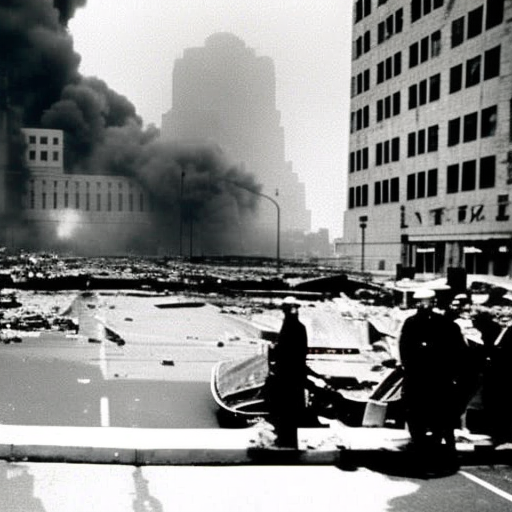Summary:
The September 11 attacks were a series of coordinated terrorist attacks carried out by the extremist group al-Qaeda on September 11, 2001. Four commercial airplanes were hijacked, with two of them crashing into the Twin Towers of the World Trade Center in New York City, one crashing into the Pentagon in Arlington, Virginia, and the fourth crashing into a field in Pennsylvania after passengers attempted to regain control of the plane. The attacks resulted in the deaths of nearly 3,000 people and caused significant damage to infrastructure and the economy.
Background:
The September 11 attacks were a culmination of years of planning by al-Qaeda, an extremist Islamic group led by Osama bin Laden. The group had previously carried out attacks on American targets, including the 1993 bombing of the World Trade Center, the 1998 bombings of the U.S. embassies in Kenya and Tanzania, and the 2000 attack on the USS Cole. The attacks on September 11, 2001, were intended to be even more devastating and symbolically significant.
The Attacks:
On the morning of September 11, 2001, 19 hijackers affiliated with al-Qaeda boarded four commercial airplanes. American Airlines Flight 11 and United Airlines Flight 175 were flown into the North and South Towers of the World Trade Center, respectively, causing both towers to collapse within hours. American Airlines Flight 77 was crashed into the Pentagon, causing significant damage and loss of life. United Airlines Flight 93, which was believed to be headed towards a target in Washington, D.C., crashed into a field in Pennsylvania after passengers attempted to regain control of the plane.
Impact:
The September 11 attacks had a profound impact on the United States and the world. The attacks resulted in the deaths of 2,977 people, including civilians, first responders, and the hijackers themselves. The destruction of the Twin Towers in New York City became a symbol of the attacks and the resilience of the American people. The attacks also caused significant economic damage, with estimates suggesting a loss of over $123 billion in the immediate aftermath.
Response:
In response to the attacks, the United States launched the War on Terror, with the goal of dismantling al-Qaeda and preventing future attacks. The U.S. military invaded Afghanistan in October 2001, targeting al-Qaeda and the Taliban regime that harbored them. The war in Afghanistan lasted for over a decade and resulted in the overthrow of the Taliban, but also led to a protracted conflict and instability in the region.
Legacy:
The September 11 attacks had a lasting impact on global politics and security. It led to increased security measures at airports and other public spaces, as well as the creation of the Department of Homeland Security in the United States. The attacks also fueled anti-Muslim sentiment and led to a rise in Islamophobia. The memory of the attacks continues to shape public discourse and policy decisions related to counterterrorism efforts.
Conclusion:
The September 11 attacks were a watershed moment in history, marking a significant shift in global security and the beginning of a new era of counterterrorism efforts. The attacks resulted in the loss of thousands of lives and caused widespread devastation. The legacy of the attacks continues to be felt today, with ongoing conflicts and debates about security and civil liberties.












